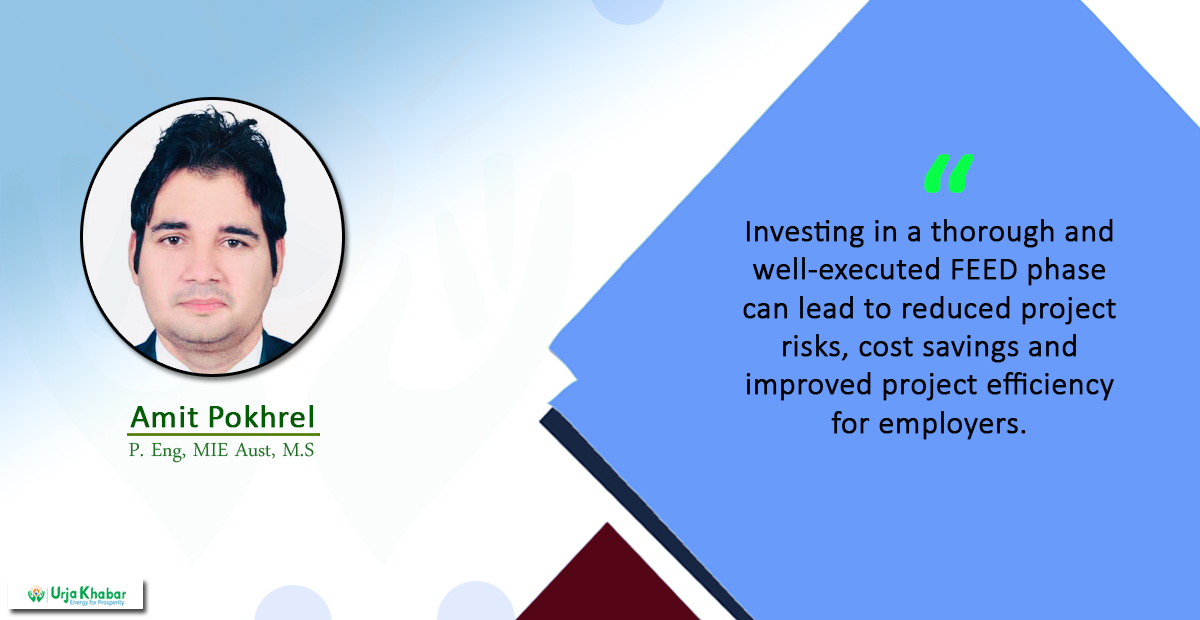
When it comes to engineering projects, whether it's constructing a new building, developing a new product, or implementing a complex infrastructure system, the Front-End Engineering Design (FEED) phase is crucial. This initial phase sets the foundation for the entire project and can significantly impact its success. In this article, I will explore why Front-End Engineering Design is so important during detailed engineering and how it can be beneficial for the employer.
Engineering Design

Front-End Engineering Design, often referred to as FEED, is the preliminary phase of the engineering design process. During this phase, the project requirements are established, and the overall project scope is defined. This phase includes conceptualizing the project, conducting feasibility studies, assessing potential risks, and developing a preliminary budget and timeline.
Engineering Design and Importance

Risk Mitigation: One of the primary reasons Front-End Engineering Design is so crucial is its ability to identify and mitigate risks early on in the project. By thoroughly analyzing the project requirements and constraints during the FEED phase, potential risks can be identified and addressed before they become costly issues during detailed engineering.
Cost Savings: Investing in Front-End Engineering Design can lead to significant cost savings in the long run. By thoroughly planning and conceptualizing the project during the FEED phase, potential design flaws or errors can be identified and corrected early on, avoiding costly rework during detailed engineering.
Improved Project Efficiency: A well-executed FEED phase can streamline the entire engineering process. By clearly defining the project scope and requirements upfront, the detailed engineering phase can proceed more smoothly and efficiently, leading to a faster project completion time.
Engineering Design and Benefits
Employers stand to gain numerous benefits from investing in Front-End Engineering Design for their projects. Some of the key advantages include:
Reduced Project Risks: By conducting a thorough FEED phase, employers can minimize project risks and uncertainties, leading to a more predictable project outcome.
Cost-Effective Solutions: FEED allows employers to identify cost-effective design solutions and value engineering opportunities early on in the project, helping to maximize the project's return on investment. Enhanced Stakeholder Communication: Clear and detailed Front-End Engineering Design documentation can improve communication and alignment among project stakeholders, leading to smoother project execution and better outcomes.
The Role FIDIC
The International Federation of Consulting Engineers (FIDIC) plays a significant role in promoting best practices in engineering and construction projects. FIDIC contracts often include provisions that emphasize the importance of Front-End Engineering Design for project success. FIDIC contracts typically require contractors to adhere to rigorous engineering standards during the FEED phase, ensuring that projects are well-planned and executed.
In the opinion of the Professional Engineer, Front-End Engineering Design is a critical phase of the engineering design process that can significantly impact the success of a project. Investing in a thorough and well-executed FEED phase can lead to reduced project risks, cost savings, and improved project efficiency for employers. Additionally, FIDIC plays a crucial role in promoting best practices in Front-End Engineering Design and ensuring that projects are executed to the highest standards. By prioritizing Front-End Engineering Design, employers can set their projects up for success and avoid costly mistakes down the road.
